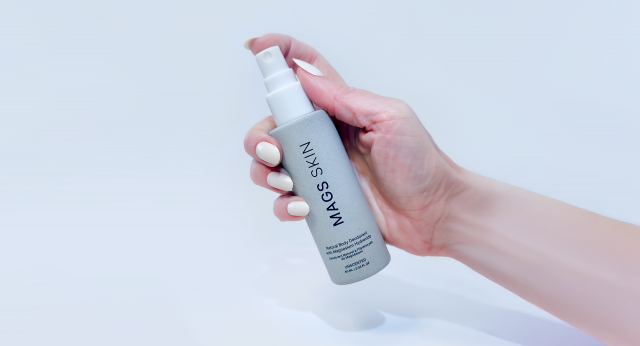You try a high-rated skincare product, follow its instructions to the T, and still end up with redness and breakouts. Does this sound familiar?
The culprit may not be the product itself, but whether it's ideal for your skin type and its needs. Skincare never happens in isolation. Studies have found that girls as young as seven are using (multiple) pricey skincare products they shouldn't.
Experts have criticized the viral TikTok skincare routines in particular, alleging that they have caused allergic reactions and product-related irritation among teens. This is not just about products that must be applied, but anything that you wear against your skin.
More people are treating their skin, not necessarily protecting it. It's all about carefully choosing products, which means you may have to resolve debates at times.
This article will discuss three product battles where your skin will most likely pick a side on your behalf. Get ready to have a skin-first perspective on which everyday essentials truly support your skin (and when).
Bar Soap Vs Body Wash: The Suds Standoff
One of the oldest rivalries that exists in the bath space is that of bar soap and body wash. While both cleanse the body, they go about doing so differently. Your skin will have definite preferences based on its type, sensitivity, and moisture needs.
Let's unpack the two. First, bar soap is the no-nonsense traditionalist: solid, simple, and time-tested. Effective in removing dirt, oil, and sweat from the skin, it's been around for centuries. Most traditional bar soaps are made by combining fats or oils with an alkaline substance like lye.
A few reasons they're favored include affordability, easy storage, and benefits for oily skin. It's no wonder that the global market for bar soap had a value of $30.16 billion in 2023. It is projected to become $44.20 billion by 2032.
Even with its simplicity, the bar soap has its drawbacks, like a high pH and preservatives in heavily advertised varieties. On the other hand, body wash is the liquid cousin of bar soap, often deemed as the modern multitasker.
It is typically less drying than bar soap and enriched with hydrating ingredients like aloe vera or ceramides. The global body wash market is also huge, valued at $53.74 billion in 2025. It is expected to become $79.96 billion by 2032.
Even body washes may contain harsh ingredients, and they're often not so cost-effective. However, both may win the suds standoff in different cases, as listed below:
- Body wash is the gentler, more hydrating choice for dry and sensitive skin.
- A mild bar soap can work just fine for oily or low-maintenance skin.
- Bar soap generally wins the sustainability point for eco-conscious users.
- Body wash delivers variety and indulgence for those who treat their shower like a ritual.
Stick vs Spray Deodorant: The Underarm Showdown
Don't fall for the myth that choosing the right deodorant is about the scent or the brand. It's all about how your skin reacts, how you apply it, and even how recently you shaved.
Since the choice between a spray deodorant vs stick counterpart is a real debate, let's understand each a bit more closely. Stick deodorants are wax-based and applied directly. They carry benefits such as travel-friendliness and controlled, mess-free application.
However, the waxy texture can create friction, especially on freshly shaved or sensitive skin. Speaking of spray deodorants, they've evolved far beyond the old-school aerosol cloud. Present-day sprays are smarter and gentler, designed to work with the skin, not against it.
Spray formulas are specifically designed to avoid friction. What about those with skin conditions like eczema or psoriasis? MAGS Skin shares that most mainstream deodorants, even the ‘natural' ones, can cause flare-ups. Thankfully, magnesium-powder formulations are available for those with reactive skin.
Convenience isn't the only win. 96% of users in a 307-person trial said they were able to stay odor-free for 24 hours. As for winning the standoff, that would again depend on your skin and its needs, as follows:
- A gentle, chemical-free spray is the best option for sensitive or reactive skin.
- Stick deodorants with antiperspirants may be suitable for humid climates or post-workout skin.
- Spray is the only appropriate choice just after a shave.
- Sticks may be better for those who prefer targeted applications.
Cotton vs Synthetic Underwear: The Fabric Face-off
Underwear may not be a skincare product in the traditional sense, but it directly impacts skin health. How? Through its fabric, mainly. The fabric matters because your skin loses moisture every single day (around 21 ounces to be precise).
The same gets trapped in the skin when you wear fabrics that can't breathe. Besides making you feel hot and clammy, this creates an ideal environment for bacteria to breed. The Unsustainable Magazine recommends avoiding the following fabrics in particular: color-fast, wrinkle-free, and water-resistant.
However, the cotton vs. synthetic debate equally matters. The former is a natural, breathable fiber, revered for its skin-friendly properties. It is also hypoallergenic and has a soft texture that is gentle on sensitive skin.
Synthetic fabrics, like polyester and nylon, are often favored for their stretch and durability. They may be go-to options for athletic garments. However, they're also less breathable, can cause chafing, and hold body odors even after washing.
In the context of skincare, synthetic fabrics may undermine the effects of your deodorant, especially if you're using a natural spray formula. However, since we're talking about underwear, there may be some leeway. Each fabric type has its place, as shared below:
- Cotton underwear is most suited for daily comfort, especially in hot and humid climates.
- Synthetic underwear may be a better fit for workouts due to its moisture-wicking properties. It will prevent skin rashes, some of which are serious.
- Cotton underwear is also ideal for the time of menstruation due to its frictionless properties.
- Synthetic underwear may work better for colder days as it traps warmth and holds shape better.
The final take is that good skin is a lifestyle, not a label. It is shaped by the tiny decisions you make daily. A recent survey of 1000 US adults found that 80% experienced skin concerns.
However, only 40% visited a dermatologist. This underscores that skin issues are common, yet remain largely unaddressed. You don't need to fill this gap with prescriptions, but choose intentional habits.
Shape a skin routine you can rely on. Select products that are suited for your skin's needs. The smallest choices can have the biggest impacts.






